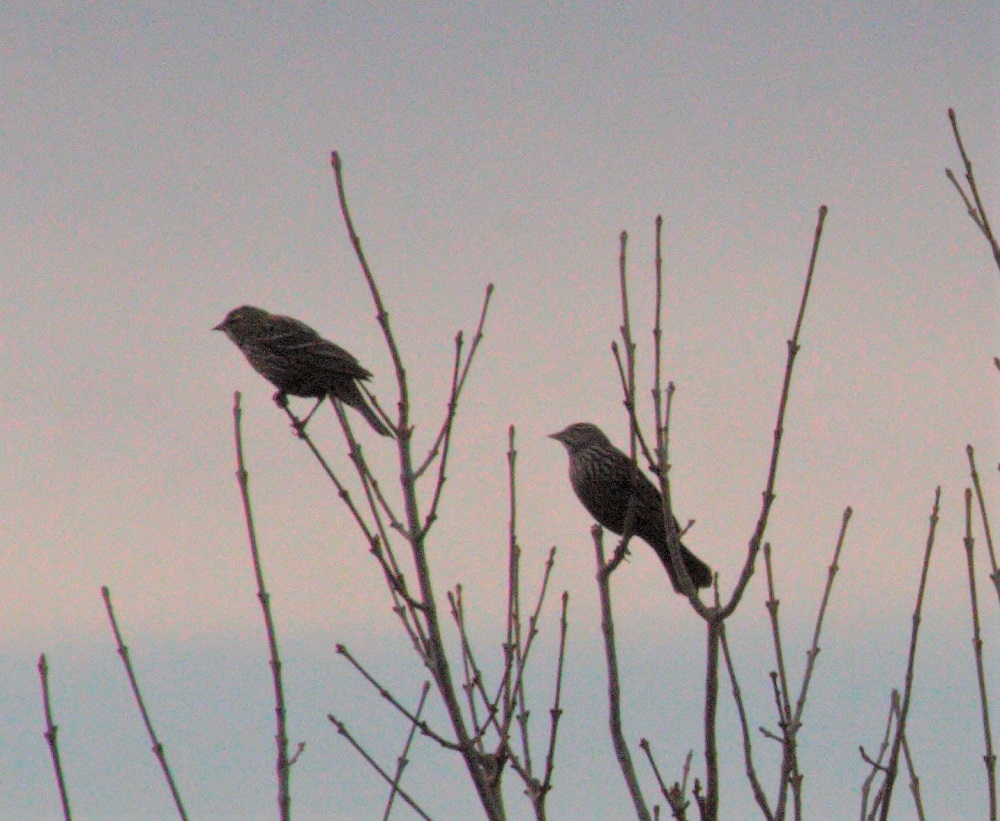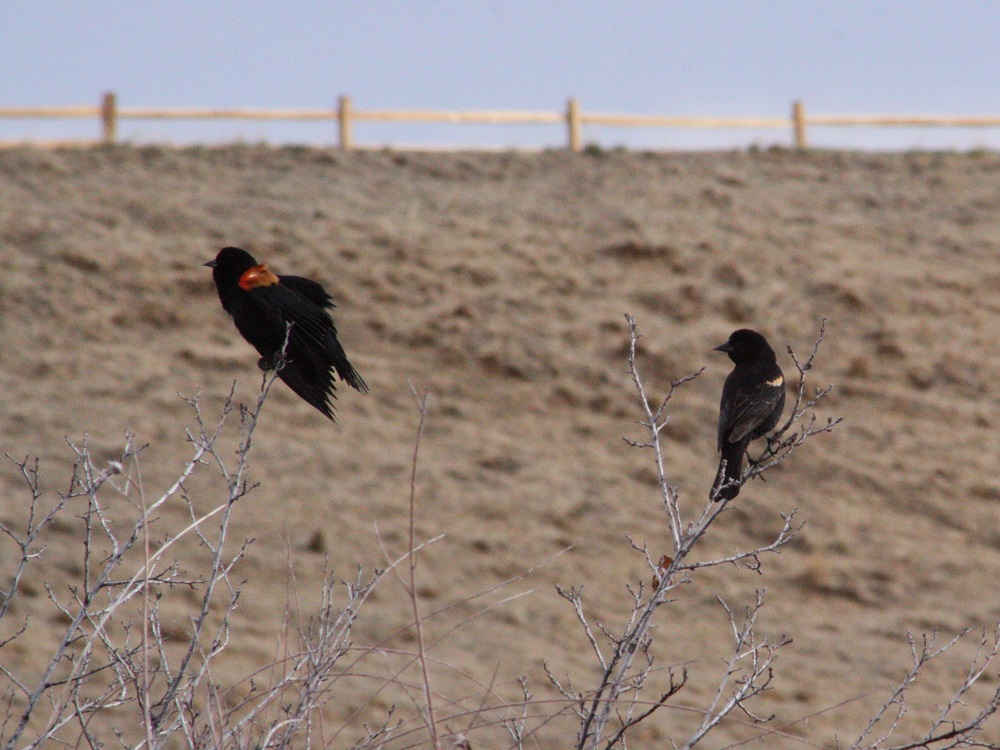Red-winged Blackbirds are known as marsh birds, and that is where you will find them in the Willow Spring Open Space. If you look among the willows and cattails, you might be able to see quite a few black birds with red on their shoulders or just a hint of red and/or yellow along their wings. These are the male Red-winged Blackbirds.
The female Red-winged Blackbirds don’t resemble their name as much as the males; their coloring is more like sparrows by being a streaky brown. They share the sharp beak and low profile of the males.
Red-winged Blackbirds are frequently heard before they are seen. Their off-key song is a nasal gurgling ending in a rough trill, kon-ka-reeeeeee, and it can be heard all over the marshy portions of the Open Space, especially in spring and summer months.

Red-winged Blackbirds have been seen year-round at the Willow Spring Open Space, although their numbers are much larger in the Spring, Summer and Fall. They eat mostly insects such as dragonflies, grasshoppers, spiders and moths along with seeds like sunflowers.
They are in the Passeriformes Order, or passerines, which includes perching birds and songbirds. Birds in this order have a toe structure that is well-adapted to perching, by being 3 toes facing forward and 1 toe facing backwards on each foot. Red-winged Blackbirds utilize this by even being able to perch on cattail stalks.
How to Recognize a Red-winged Blackbird
Red-winged Blackbirds are about 7-9″ long with a wingspan of 12-16″. They are stocky and medium-sized and generally travel in flocks except for during nesting season.
Male red-winged Blackbirds are glossy black with slender, sharp brown bills. They have a red shoulder patch, outlined in yellow, which shows when they are displaying. Often when they are perched, all you see is a yellow stripe along the top edge of the wing.

Due to their streaky brown coloration, the females are easily confused with sparrows. However, Red-winged Blackbird females have a salmon color on their face and throat along with a darker belly than sparrows.
Red-winged Blackbirds are in the Icteridae family (icterids), which is composed of medium-sized to large songbirds with mostly long, heavy pointed bills and long tails. Icterids include cowbirds, grackles, orioles, meadowlarks and bobolinks.
Through the Seasons – migration and nesting
While some male Red-winged Blackbirds stay in this region year-round, all of the females and some males make a short or long migration to the southern U.S., Mexico, and South America. They arrive here in late February-April and depart in September-November.
They begin nesting in April and May. The female builds a nest cup by weaving leaves of water plants through the cattail stalks and lining it with soft, fine grasses. It is anywhere from 3-10 feet above the ground.
The female lays about 3-4 eggs which are about 1″ long. The female incubates the eggs for 11 days, and they leave the nest when they are 11-14 days old with the parents feeding them for up to 2 weeks after they leave the nest.
Where to find in Willow Spring Open Space
These birds are mostly seen and heard among the cattails along Willow Creek – especially at the base of the Englewood Dam, or as lookouts perched high in trees.

Did You Know?
In the fall, the Red-winged Blackbirds gather in flocks with their fellow Icterids, including starlings, grackles and cowbirds, to make it harder for predators to pick them off. Then they all migrate as large flocks, with the female Red-winged Blackbirds starting their migration before the males.
References and Further Reading
- Wild About Rocky Mountain Birds: A Youth’s Guide to the Rocky Mountain States, by Adele Porter, 2012
- Peterson First Guide to Birds of North America, by Roger Tory Peterson, 1986
- The Sibley Field Guide to Birds of Western North America: Second Edition, by David Allen Sibley, 2016
- Kaufman Field Guide to Birds of North America, by Kenn Kaufman, 2000
- Pete Dunne’s Essential Field Guide Companion, by Pete Dunne, 2006
- Great Courses, The National Geographic Guide to Birding in North America, Course 7782, James Currie


